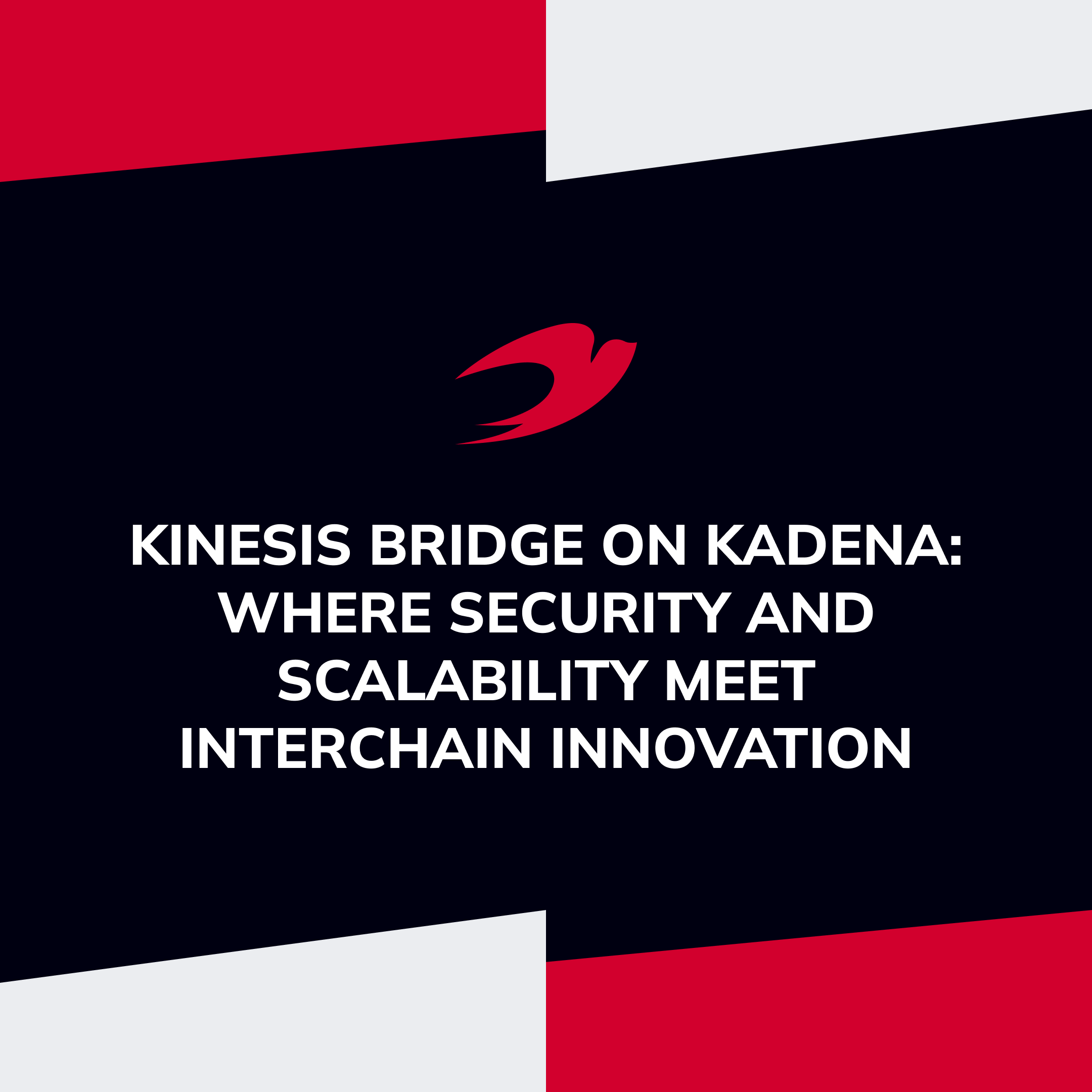Our development team is excited to share the latest updates on the progress of Kinesis Bridge, our cross-chain bridging solution, built for the Kadena ecosystem.
As we prepare for its launch, we’ve reached several important milestones that not only enhance the bridge’s functionality but also set the foundation for secure, scalable, and decentralized cross-chain communication.
Integrating Routing ISM for Adaptive Security
One of our most significant achievements is the successful integration of the Routing ISM (Interchain Security Module) into Kinesis Bridge. This module, powered by Hyperlane’s cutting-edge technology, adds a critical layer of flexibility to our security framework. With Routing ISM, the bridge can dynamically adjust security measures based on the origin of messages, tailoring protection to each chain’s trust model.
This is essential in the multi-chain ecosystem, where the risk levels and trust requirements can vary significantly between networks. During rigorous testing, we executed cross-chain transactions between Kadena and Sepolia on the testnet.
The results? Stable and validated data flows that demonstrate the system’s ability to handle real-time interchain messaging securely and efficiently.
Strengthening Cross-Chain Communication
Additionally, we’ve incorporated the latest updates from Hyperlane to further enhance the bridge’s cross-chain communication capabilities. These upgrades include support for efficient data relay and message validation across networks.
Key to this improvement is the introduction of “mailboxes” on each connected chain. These mailboxes enable seamless and reliable transactions, ensuring the integrity and provenance of every message.
By leveraging Hyperlane’s validator sets and optimistic security mechanisms, Kinesis Bridge guarantees both trustworthiness and speed, which are essential for decentralized applications operating in multi-chain environments.
The Road Ahead: EVM Networks Integration and Celestia
Our immediate focus is deploying Kinesis Bridge on Ethereum mainnet. Following this launch, we will execute a staggered deployment across eight major EVM-compatible networks in the new year:
- Arbitrum
- Avalanche
- BNB Chain
- Celo
- Gnosis Chain
- Moonbeam
- Optimism
- Polygon
Additionally, we have completed integration with Celestia, a modular blockchain known for its advanced Data Availability and consensus layer. Celestia’s innovative DA sampling technology allows us to verify transaction integrity without requiring full data storage, significantly improving the bridge’s scalability and enabling more complex interchain operations.
These deployments will expand the bridge’s reach and enable developers to build decentralized applications that leverage secure, decentralized interoperability across leading blockchain ecosystems.
Paving the Way for a Seamless Cross-Chain Future
The progress we’ve made with Kinesis Bridge represents a major step toward achieving seamless cross-chain interoperability within the Kadena ecosystem. By combining flexible security frameworks like Routing ISM, advanced cross-chain communication features from Hyperlane, and modular scalability through Celestia, Kinesis Bridge is poised to become a cornerstone solution for multi-chain environments.
We are excited about what’s ahead as we continue to enhance Kinesis Bridge and prepare for its launch. Stay tuned for more updates and get ready to experience a new level of secure, efficient, and scalable cross-chain connectivity.
Together, we’re building the future of blockchain interoperability!

